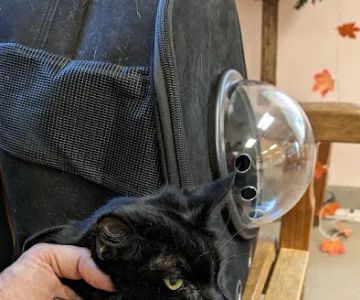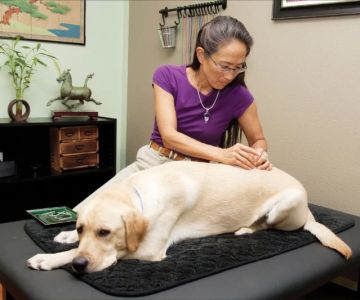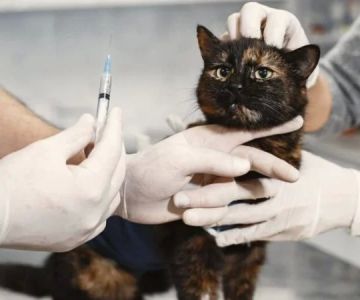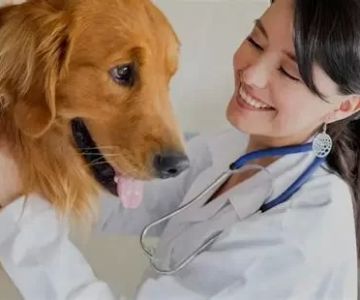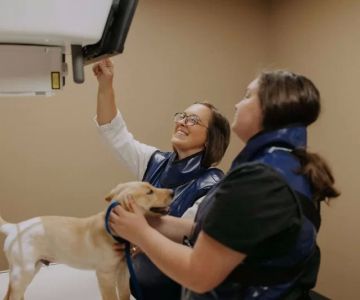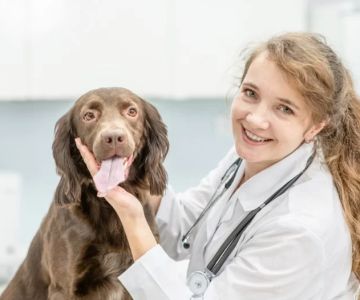Do I Want to Be a Mixed Animal Veterinarian? A Guide to the Career Path
- 1- What Does a Mixed Animal Veterinarian Do?
- 2- Pros and Cons of Becoming a Mixed Animal Veterinarian
- 3- How to Become a Mixed Animal Veterinarian
- 4- Real-Life Experiences of Mixed Animal Veterinarians
- 5- Is a Mixed Animal Veterinarian Career Right for You?
1- What Does a Mixed Animal Veterinarian Do?
A mixed animal veterinarian is a versatile and highly skilled professional who provides medical care to a wide range of animal species. Unlike veterinarians who specialize in either small animals (like cats and dogs) or large animals (such as cattle and horses), a mixed animal vet treats both. These veterinarians play a critical role in rural communities, offering healthcare to farm animals, pets, and even exotic animals, depending on their practice.
The responsibilities of a mixed animal veterinarian include diagnosing and treating illnesses, performing surgeries, managing preventive care, and providing emergency services. Mixed animal vets often work in both clinical settings and on-location farms or ranches, making their job highly dynamic and diverse. They may even assist with public health issues, such as zoonotic diseases that can spread from animals to humans.
2- Pros and Cons of Becoming a Mixed Animal Veterinarian
Becoming a mixed animal veterinarian can be incredibly rewarding, but it also comes with unique challenges. Here’s a breakdown of the pros and cons:
2.1- Pros
Variety of Work: One of the biggest benefits of being a mixed animal veterinarian is the variety of species and conditions you get to work with. This keeps the job interesting and ensures you’re always learning and adapting to new challenges.
Impact on Communities: Mixed animal vets often work in rural areas, where their services are essential for farmers and pet owners. This gives you the chance to make a tangible difference in the lives of animals and the people who rely on them.
Job Security: With the need for veterinary services for both large and small animals, mixed animal veterinarians often enjoy high job demand and security, especially in rural regions.
2.2- Cons
Physical Demands: Mixed animal veterinarians often need to be physically fit and prepared for the tough demands of their job. Traveling to farms, handling large animals, and performing surgeries can be physically taxing, requiring stamina and strength.
Irregular Hours: This job may require you to be on call for emergencies, which can mean long hours, weekends, and night shifts. It’s not uncommon for mixed animal veterinarians to work in challenging conditions and deal with high-stress situations.
Emotional Toll: While rewarding, working with animals can also be emotionally difficult. Whether it’s euthanizing a pet or dealing with the loss of an animal patient, the emotional aspect of veterinary care can sometimes be overwhelming.
3- How to Become a Mixed Animal Veterinarian
Becoming a mixed animal veterinarian requires a combination of education, experience, and training. Here’s the step-by-step process:
3.1- Earn a Bachelor's Degree
The first step to becoming a mixed animal veterinarian is obtaining a bachelor’s degree, typically in animal science, biology, or a related field. This stage will provide you with the foundational knowledge in science and biology that is crucial for veterinary school.
3.2- Complete Veterinary School
After earning your bachelor’s degree, you must complete a Doctor of Veterinary Medicine (DVM) program at an accredited veterinary school. Veterinary school generally lasts four years and covers a wide array of topics, including anatomy, physiology, pharmacology, and animal diseases.
3.3- Gain Experience in Mixed Animal Practices
During or after veterinary school, it’s important to gain hands-on experience in a mixed animal practice. Internships, externships, or working as an assistant in a mixed animal clinic will give you the practical experience needed to build confidence in treating both small and large animals.
3.4- Consider Specialization or Certification
While certification isn’t required, some veterinarians choose to specialize in a particular aspect of mixed animal care, such as large animal surgery or emergency care. Becoming board-certified can help you stand out in the field and provide more opportunities for career advancement.
4- Real-Life Experiences of Mixed Animal Veterinarians
Real-life stories from mixed animal veterinarians highlight the highs and lows of this unique career path. One mixed animal vet, Dr. Karen Smith, shares her experience: “Every day is different. I could be helping a newborn calf on a farm in the morning and then treating a dog with a broken leg in the afternoon. It’s tough, but it’s also incredibly rewarding to see the animals recover and know you played a part in their healing.”
However, not all days are easy. Dr. John Lewis, another mixed animal veterinarian, recalls a particularly challenging day: “I had to perform an emergency surgery on a horse while balancing the needs of a sick cat at the clinic. It was stressful, and the long hours can be draining, but when you save both animals, it’s all worth it.”
5- Is a Mixed Animal Veterinarian Career Right for You?
Deciding whether to become a mixed animal veterinarian is a big decision. It’s important to ask yourself a few key questions:
5.1- Do You Love Working with Both Small and Large Animals?
A mixed animal veterinarian requires you to be comfortable working with a wide variety of animals. If you enjoy treating both pets and farm animals and don’t mind the physical demands, this could be the perfect career path for you.
5.2- Are You Prepared for the Challenges?
Mixed animal veterinarians often face irregular hours, physical demands, and emotional challenges. If you’re ready to face these hurdles and are committed to making a difference in the lives of animals, then this career could be highly fulfilling.
5.3- Do You Want a Dynamic and Rewarding Job?
If you’re seeking a career that offers variety, hands-on work, and the ability to help a wide range of animals, a mixed animal veterinarian job could be your ideal choice. The rewards of knowing you’ve saved animals and contributed to the well-being of both pets and livestock are unmatched.

